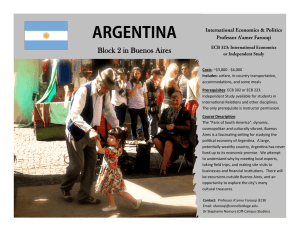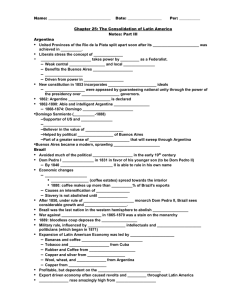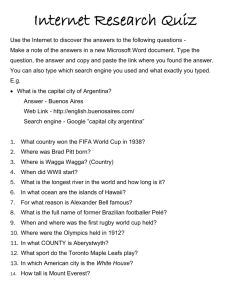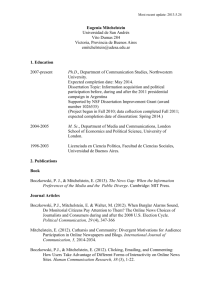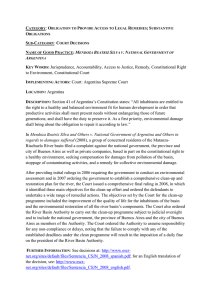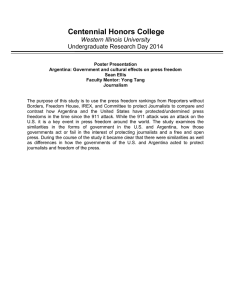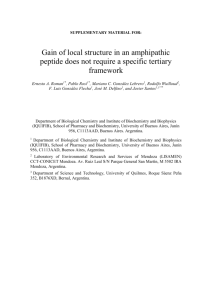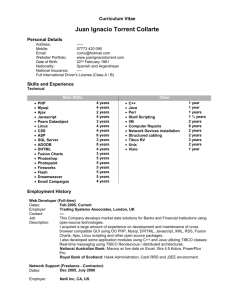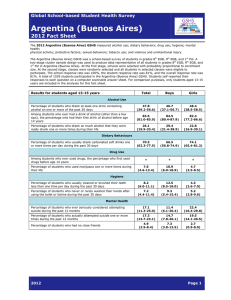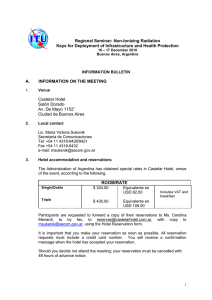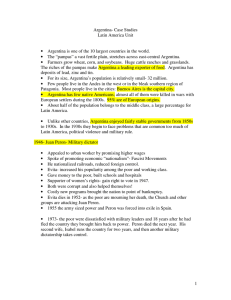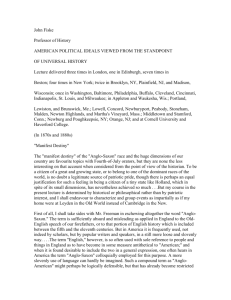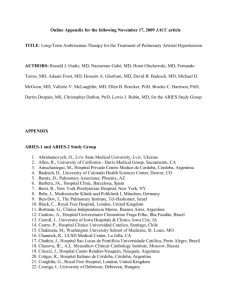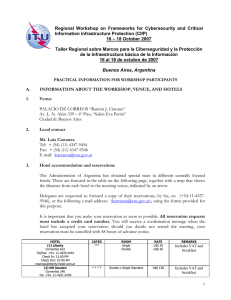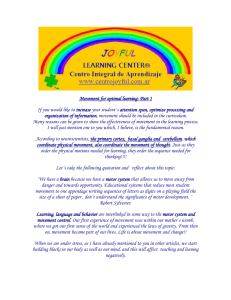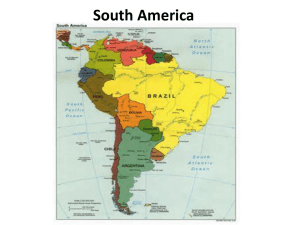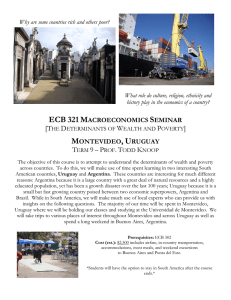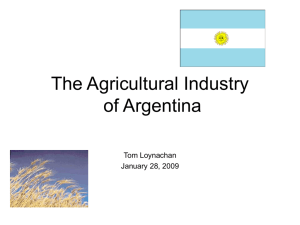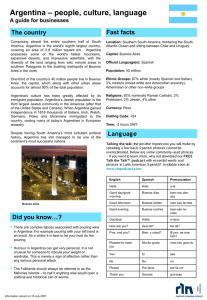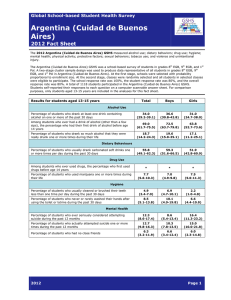Argentina`s Dirty War
advertisement
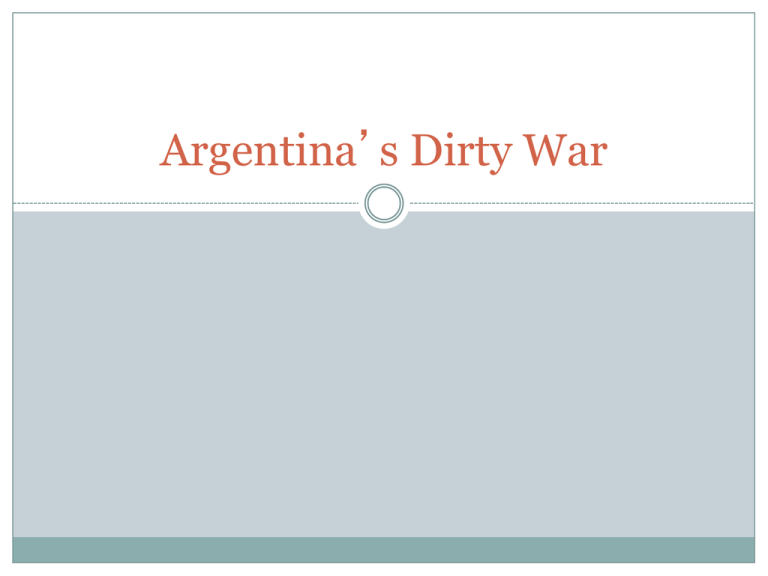
Argentina’s Dirty War Argentina 42 million people Andes in the west, pampas between mountains and Buenos Aires, Arctic region to the south Second largest country in South America in terms of area Large number of immigrants, late 19th to 20th Cent Facundo: Civilization and Barbarism (1845) Domingo Faustino Sarmiento, writer and president Book presents the conflict of the nationstate as one between the barbarism of the rural areas and the civilization of the city, the latter influenced by Europe Argentina in the late 1960s and early 1970s Period of political upheaval and economic decline Armed opposition groups openly challenging the government, including open battle between the army and guerrilla fighters. Paramilitary groups with ties to the government killing people, including up to 2000 between 73-76 Robberies, kidnappings, assassinations Government of Juan Perón and his wife, Isabel, unable to stop the violence. Military Government 1976 TO 1983 Coup d’etat Return of elected Establishes military government New president establishes commission to investigate human rights violations junta Promises to end violence Initiates war using “different” methods. “Systematic State Terrorism” Government turns on its own people – to terrify the population Uses not only incarceration and torture but also disappearances Attacks not only people involved in violent revolutionary movements but anyone connected to communism or Marxism or “ideas incompatible with Western Christian civilization.” Military government pursues people involved with trade unions and universities as well as those who help the poor. The Disappeared People abducted and taken into state custody and never seen again by relatives The word “disappeared” changes from a voluntary choice to an act of the state, an intransitive verb: to disappear someone Jacobo Timerman “My life was spared because this extremist sector was also the heart of Nazi operations in Argentina. From the very first interrogation, they figured they had found what they’d been looking for for so long: one of the sages of Zion, a central axis of the Jewish antiArgentine conspiracy.” Mothers of the Plaza de Mayo Risked their lives in a grass-roots political act Inspired other groups Gained international attention for the plight of the disappeared throughout Latin America White scarves as a sign of peace and mothers’ love. How to confront the past? Space for Memory And Human Rights The Official Story (1985) Set in Buenos Aires in 1983 "Our subject is Argentine History." "No people can survive without memory." "History is the memory of the people.” The Story Continues Daughter of ‘Dirty War,’ Raised by Man Who Killed Her Parents New York Times, Oct. 8 2011 http://www.nytimes.com/2011/10/09/world/america s/argentinas-daughter-of-dirty-war-raised-by-manwho-killed-her-parents.html?pagewanted=all

